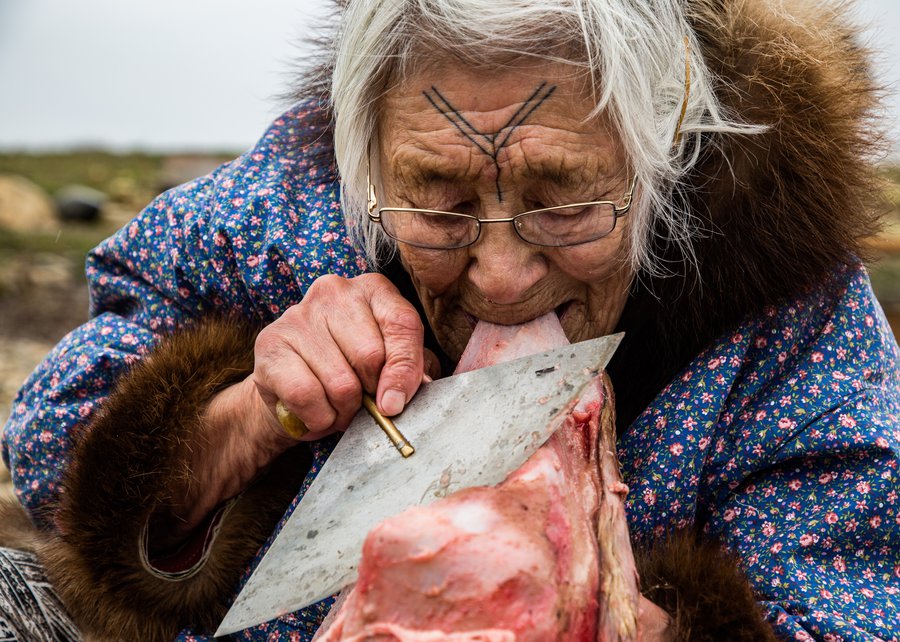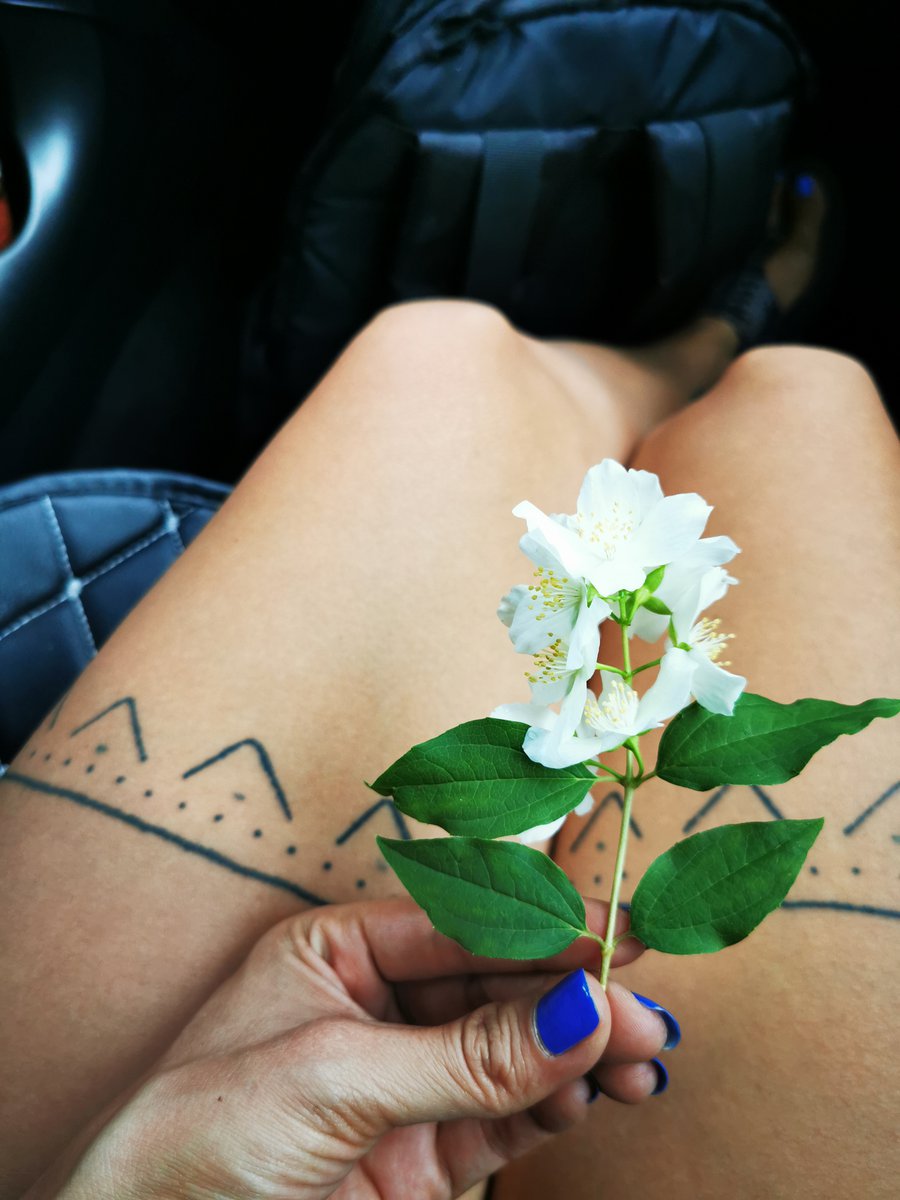
I am one of many Inuit women proudly carrying on the tradition of wearing kakiniit, or traditional Inuit tattoos, across Inuit Nunangat.
These markings are sacred to me and have deep, beautiful meanings and stories behind them. I wear them for many reasons, including to proudly identify as an Inuk woman and to reclaim agency over my body as an Indigenous person.

Jana Angulalik midnight fishing in July 2020, at Gravel Pitt. (Photo: Jana Angulalik)
My first kakiniit was a facial tattoo that my cousin, Hovak Johnston, gifted me in August of 2017. I also wear traditional tattoos on my wrists and thighs, both of which were created during the Tattoo Revitalization Project.
Not only am I lucky to be a part of Indigenization by wearing traditional markings, I am also very honoured to be one of the growing number of Inuit women to practice hand poke and skin stitch tattooing. I am taking part in the resurgence of our once banned markings.

Where I live in Cambridge Bay, Nunavut one of the friendly faces you might see is my Auntie Millie Navalik Angulalik, or as most of ‘The Bay’ knows her, ‘Silly Millie.’ She has an incredibly contagious sense of humour and a helping nature that takes her all over town, making friends with everyone. Silly Millie also proudly wears many tattoos, some of which are machine work with modern designs while others are hand-poked and traditional. Her traditional hand-poked tattoos that adorn her face, chest, arms, wrists and hands have a depth of meaning.
Millie Navalik Angulalik reflects on what her traditional Inuit markings mean to her. (Video: Kaitlyn Van De Woestyne)
A ‘V’-shaped tattoo on our forehead represents womanhood and was often one of the first tattoos received by an Inuk, marking the milestone of starting her first period.
However, our lands and people are both vast and diverse. In other parts of Inuit Nunangat, a person’s first tattoo was often on the chin.
Other markings, such as finger tattoos may give honor and respect to Nuliayuk, our Sea Goddess.
Markings that wrap-around the chest and back are meant to resemble an amauti, or parka worn to carry babies. This design is often called the motherhood or ‘Celina Tattoo’ after renowned artist Celina Kalluk.
Tattoos on the thighs are birthing tattoos. They prepare a baby to enter the world in beauty and knowledge, born between traditionally marked thighs.
Margaret Mannilaq reflects on what her traditional Inuit markings mean to her. (Video: Kaitlyn Van De Woestyne)
Our tattoos mark milestones and triumphs, but they can also represent loved ones who are no longer with us, or stories that are difficult to share. It is always best to exercise caution and respect when inquiring further. Here are some tips on how to ask someone about their traditional or modern tattoos.

Pihoak Bessie Omilgoetok of Cambridge Bay cleans the blubber from a seal pelt with her ulu. (Photo: Kaitlyn Van De Woestyne)
Get to know the person before asking any questions
Traditional Inuit markings were worn by women for millennia. After missionaries arrived in Canada’s Arctic in the late 1700’s, many cultural practices were later banned and deemed “evil."
After our people endured genocide, the traditional practice has made a resurgence in the last several years with projects like “Tunniit: Retracing the Lines of Inuit Tattoos” and the Inuit Tattoo Revitalization Project.
Tattoos are being worn widely across Inuit Nunangat again. This has led to curiosity and excitement. These markings are both beautiful and bold, so it is no surprise that many people, Inuit and others alike want to know more about them.

Jana Angulalik’s birthing tattoos handpoked and skin stitched by Kunaq of Alaska and herself. (Photo: Jana Angulalik)
While it is great to take interest and share knowledge, one must consider that the meanings behind our traditional tattoos might be too complex to answer on the spot, or ever. It is especially important to be respectful when speaking to elders.
While I am comfortable sharing about my traditional markings, I find it best to share such deep and soulful meanings during a one-on-one visit.
It is customary to offer a trade for traditional knowledge
Appropriate trades could include offering a product from our local fish plant or an invitation for a meal. Trades can also come in the form of sewing materials or groceries.
But the best way to learn is simple, by making friends with locals.
Enjoy the beauty of such ancient markings without asking what they mean
This was a difficult concept to learn myself, even as a tattoo artist. It was hard not to ask about the meaning behind a tattoo I was asked to create, but years of experience means I know now not to ask. That information belongs to the woman being tattooed, and it must be her choice to share or not.
Now, I simply give compliments and leave it at that. The celebration of our culture in the open, loud and proud. This, for generations, was not possible, so simply being a witness, and being able to compliment someone wearing such powerful markings, is monumental.

Jana Angulalik adding more kakiniit to her cousin Natasha in October 2020. (Photo: provided by Jana Angulalik)





